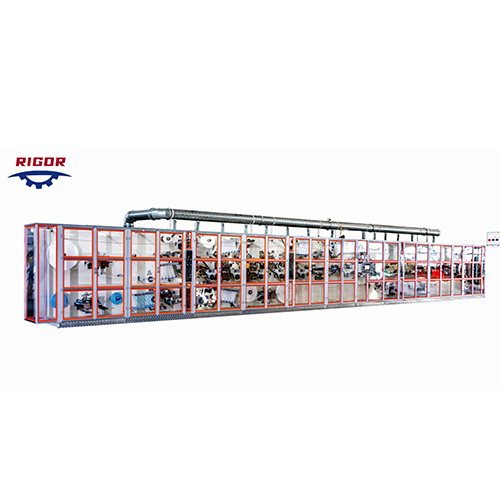The handling of defective sanitary napkins on a production line involves a combination of automated systems and human intervention to ensure that only quality products are packaged and delivered to consumers. Here is a general overview of the process:
Automated Rejection System:
- Quality Control Sensors:
- Deploy sensors and vision systems at different points along the production line to inspect sanitary napkins for defects.
- Sensors can identify issues such as irregular shapes, incorrect dimensions, stains, tears, or other visual anomalies.
- Automated Sorting:
- Implement a sorting mechanism that can divert defective sanitary napkins from the main production flow.
- This can be achieved using conveyor systems, robotic arms, sanitary pad machine or pneumatic mechanisms that redirect the defective products to a separate area.
- Reject Bin or Conveyor:
- Direct the rejected sanitary napkins to a designated reject bin or conveyor for further inspection or disposal.
- Implement mechanisms to prevent rejected products from re-entering the main production line.
- Data Logging:
- Collect data on the types and frequencies of defects detected by the automated system.
- This data can be valuable for identifying patterns, improving production processes, and reducing the occurrence of defects.
Human Intervention:
- Manual Inspection:
- Integrate manual inspection stations where trained operators can visually inspect sanitary napkins for defects that may not be easily detected by automated systems.
- Operators can also perform additional checks to ensure product integrity.
- Sorting and Removal:
- If a defective sanitary napkin is identified during manual inspection, operators can manually remove it from the production line.
- Provide bins or containers for collecting defective products.
- Feedback Loop:
- Establish a feedback loop between the operators and the production team to communicate trends in defects and areas for improvement.
- Continuous improvement efforts can be implemented based on feedback from manual inspections.
Real-Time Adjustments:
- Adaptive Control Systems:
- Implement adaptive control systems that can make real-time adjustments to the production process based on the data collected from automated inspections and manual interventions.
- These adjustments may include changes in machine settings, material handling, or other parameters to reduce the likelihood of defects.
- Machine Learning and AI:
- Incorporate machine learning algorithms and artificial intelligence to improve the accuracy of defect detection over time.
- These systems can learn from historical data to enhance their ability to identify and categorize defects.
By combining automated rejection systems with human intervention and continuous improvement strategies, manufacturers can minimize the impact of defective sanitary napkins on the production line and ensure that only high-quality products reach the market. Regular training of operators and maintenance of inspection equipment are also essential for the effectiveness of the rejection and removal process.
